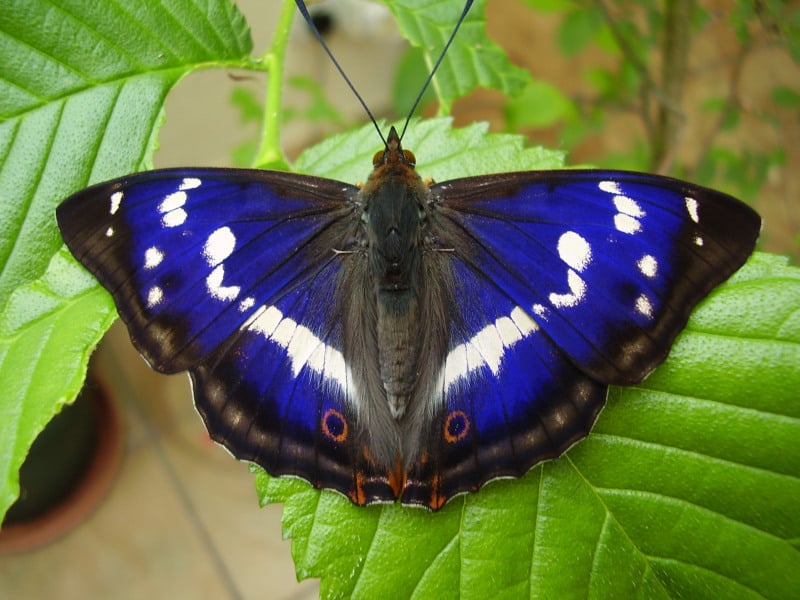
Purple Emperor Facts
- Firstly, the Purple Emperor serves as the name for a gorgeous Eurasian butterfly of the Nymphalidae family. Quite confusingly, however, another butterfly native to another region bears the same common name.
- Unfortunately, throughout its habitat range, its numbers have declined sharply since the early 20th century. The principal reason for this appears to be habitat loss. But, climate change also seems to be a contributing factor in this.
- However, its current population appears to be relatively stable for the moment. Therefore, the IUCN currently lists the beautiful Lepidoptera as Least Concern. Thankfully, conservation efforts are in place across much of its range.
Related Articles
Purple Emperor Physical Description
Most notably, the magnificent Purple Emperor, like many related species, displays a slight degree of sexual dimorphism. In its case, this occurs because the females grow to a slightly larger size than the males.
Furthermore, as a result of this genetic trait, the smaller males attain an average adult wingspan of about 3.1 in (7.9 cm). Meanwhile, the somewhat larger females attain an average wingspan of roughly 3.6 in (9.2 cm).
In addition, the adults of this particular arthropod have dark brown wings with white bands and spots. However, numerous small orange rings typically appear on each of the hindwings, creating as quite striking appearance.
But, one small physical distinction also separates the males of the species from the females. That’s because, while a little smaller in size, the wings of the males usually display an almost iridescent purple sheen that the females lack.
- Kingdom: Animalia
- Phylum: Arthropoda
- Class: Insecta
- Order: Lepidoptera
- Family: Nymphalidae
- Genus: Apatura
- Species: A. iris
Purple Emperor Distribution, Habitat, and Ecology
First of all, the fabulous Purple Emperor butterfly has a rather wide area of distribution. This region includes southern Great Britain, and suitably temperate parts of Asia. This area of habitation also extends to central and western China.
Further, this invertebrate has a highly specific type of habitat that it seeks out. It rarely occurs outside of this type of area. Most notably, this preference consists of dense, broad-leaved woodlands, especially in central Europe.
The females of the Purple Emperor species spend most of their lives in the tree canopy. There, they seem to favor dense and mature oak forests. These only come down only to lay eggs in the small bushes that grow in clearings.
Additionally, the majority of the males also spend much of the time in the treetops. There each individual fiercely defends its territory from rivals. However, it will sometimes descend to drink from puddles or feed, as the need arises.
Finally, distinctly different from most butterflies, it does not feed on flowers. Instead, it feeds primarily on the honeydew secreted by aphids. Yet it will also feed on sap oozing from oak trees, on dung, urine and animal carcasses.
Species Sharing Its Range
Check out our other articles on Earth’s Geothermal Marvels, Leaping Lesbian Lizard, Onyx River, Boojum Tree, Glass Squid, Black Footed Cat, Greater Sage Grouse, Wood Frog, Weedy Seadragon
